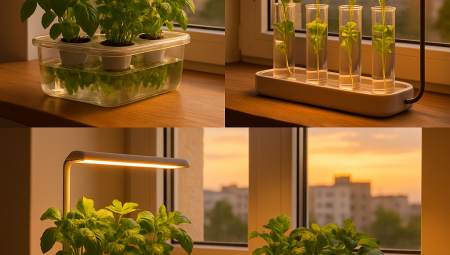What Is Gratitude Journaling?
Gratitude journaling is the practice of regularly writing down things you’re thankful for. It could be as simple as:
-
“I’m grateful for my morning coffee.”
-
“Thankful for the kind text from a friend.”
-
“Grateful for my working body today.”
It began as a psychological tool in positive psychology but has now entered wellness, self-care, and even workplace productivity domains.
At its core, it’s not about denying pain or pretending life is perfect—it’s about anchoring to the good, however small, even when life feels heavy.
The Psychology Behind Gratitude and Mindset Shifts
Gratitude journaling activates specific areas of the brain:
-
Cognitive Reframing: Writing down what’s good trains your brain to notice more positives daily.
-
Neuroplasticity: Repeating gratitude creates new neural pathways, reinforcing optimism and resilience.
-
Emotional Regulation: Practicing gratitude reduces the amygdala’s stress response and enhances prefrontal cortex control.
A consistent gratitude practice literally changes how your brain processes reality.
17 Ways Gratitude Journaling Can Shift Your Perspective
-
Reduces Negativity Bias – You notice what’s working instead of what’s wrong.
-
Increases Self-Awareness – Reflecting helps you see what truly matters.
-
Strengthens Relationships – Recognizing others’ kindness improves bonds.
-
Lowers Stress – Focusing on blessings reduces cortisol.
-
Enhances Optimism – You start to expect good, not dread the worst.
-
Boosts Patience – Gratitude trains delayed gratification and appreciation.
-
Builds Emotional Resilience – In adversity, it acts as a psychological shield.
-
Encourages Reflection – A pause to write becomes a moment of clarity.
-
Breaks Negative Thinking Loops – Regular gratitude rewires ruminative patterns.
-
Improves Focus – Clears mental fog by grounding thoughts.
-
Improves Sleep – Reflecting on positives before bed calms the nervous system.
-
Boosts Energy – Mental peace frees up physical energy.
-
Promotes Acceptance – Helps reconcile with life’s imperfections.
-
Builds Meaning – You connect the dots of growth and purpose.
-
Enhances Empathy – Noticing what others do for you increases compassion.
-
Encourages Present-Mindedness – Gratitude happens now—not yesterday or tomorrow.
-
Cultivates Contentment – You start to feel “enough” even in an ambitious world.
Common Myths About Gratitude Journaling
Despite its benefits, gratitude journaling is often misunderstood. Let’s debunk a few myths:
-
“It’s Just Positive Thinking”: Gratitude doesn’t ignore pain—it reframes it. You can acknowledge hardship and still recognize moments of goodness.
-
“I’m Not an Optimist, So It’s Not for Me”: Gratitude journaling isn’t about personality—it’s about practice. Even skeptics report mood and mindset shifts with consistency.
-
“It Takes Too Much Time”: You don’t need to write pages. Just 3 quick lines can spark mental clarity.
In reality, anyone can benefit, regardless of mindset, mood, or writing ability.
How to Start a Gratitude Journal That Works for You
Consistency beats perfection. Here’s how to begin:
-
Choose Your Moment: Mornings set the tone; evenings help you reflect. Pick what suits your routine.
-
Use Simple Prompts:
-
“What made me smile today?”
-
“What am I thankful for that I often overlook?”
-
“What challenge taught me something this week?”
-
-
Be Specific, Not Generic: Instead of “I’m grateful for my family,” write “I’m grateful for my brother calling me to check in.”
-
Use the “3-Item Rule”: List three things daily, no matter how small.
-
Review Regularly: Reread entries monthly to notice patterns and progress.
There’s no right way—your journal is your space for honest reflection.
Digital vs Paper Journaling: What’s Best?
Both methods work. Choose what helps you stay consistent:
Factor Paper Journal Digital Journal Experience Tactile, slows thoughts for reflection Quick, convenient, searchable Accessibility Requires a physical space Always with you via phone/tablet Privacy Physically private Password-protected or cloud-synced Emotional Impact More mindful, creative More flexible, less cluttered Some prefer hybrid journaling: digital during the day, paper at night.
Gratitude in Times of Hardship
Gratitude doesn’t mean ignoring pain—it means choosing to notice what still uplifts you, even in darkness.
-
During Loss: Writing “I’m grateful for having known them” honors grief with compassion.
-
In Uncertainty: Journaling helps anchor you to daily blessings—coffee, a warm shower, a shared smile.
-
Under Stress: Recalling what’s steady reduces chaos and brings perspective.
It doesn’t erase difficulty—but it shifts your response from helplessness to quiet strength.
FAQs About Gratitude Journaling
Q1: How long until I see results?
Many feel calmer within 2–3 weeks. Long-term benefits grow with consistency.Q2: What if I can’t think of anything to write?
Start small. Even breathing, shelter, or sunlight count. It’s not about magnitude—it’s about awareness.Q3: Do I need to write daily?
No. 3–4 times per week still brings results. Daily practice builds stronger habits, but flexibility matters more than rigidity.Q4: Can I use a digital app?
Absolutely. Apps like “Gratitude,” “Day One,” or “Notion” offer prompts and reminders.Q5: Is it okay if I repeat entries?
Yes. Gratitude isn’t about novelty—it’s about recognition. Repetition shows consistency in what matters to you.
Conclusion: A Simple Habit That Can Transform Your Inner World
Gratitude journaling is more than a trend—it’s a proven, accessible tool for reshaping your mind, mood, and perception of the world. In a culture that encourages more, faster, and better, pausing to notice what already is changes everything.
You don’t need more things. You may just need more awareness of the good already present.
Start today. One thought. One line. One breath of thanks.
🔗 External Resource: Harvard Health – Giving Thanks Can Make You Happier
-



